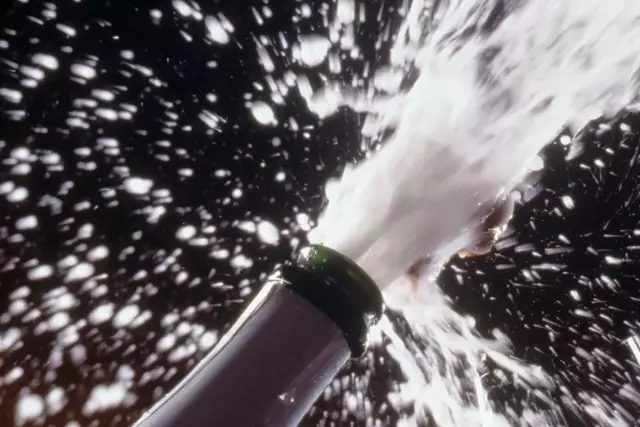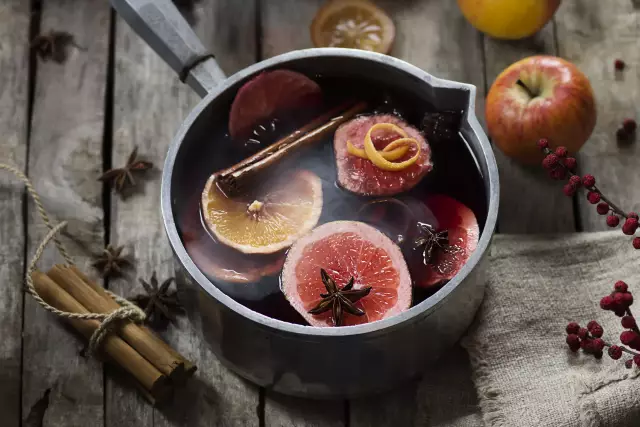Non-alcoholic wines and sparkling wines
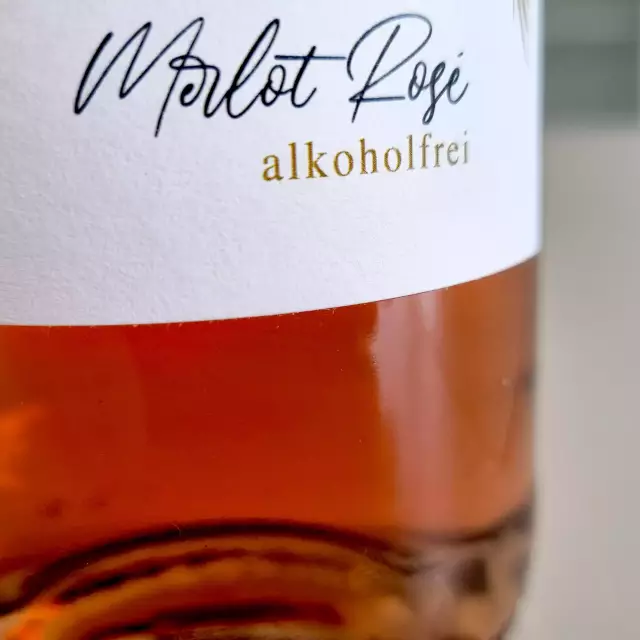
Although they are one of the smallest segments in the wine industry, the demand for dealcoholised wines is growing.
Facts
-
< 1%
Market share
-
15%
Awareness
-
< 0.5 % vol.
Alcohol
The range of dealcoholised wines and sparkling wines from wineries, winegrowers' cooperatives and commercial wineries has increased significantly in recent years. The taste of dealcoholised wines has also developed positively.
Number of producers on the riseA search for wine producers who offer alcohol-free wines, sparkling wines or secco now returns over 60 results (2022).Low level of awareness
Following the trend towards dealcoholised wines and sparkling wines, the market research institute Nielsen conducted a consumer survey on the consumption of dealcoholised wines and sparkling wines in spring 2020. 16,883 respondents from the Nielsen household panel were comparatively unaware that there is also wine without alcohol. Only 15 per cent of respondents were aware of non-alcoholic white wine, twelve per cent of the red and nine per cent of the rose-coloured alternative. Of these groups of people, around a quarter had already drunk the specified non-alcoholic type of wine. The level of awareness of non-alcoholic sparkling wines was significantly higher at 53 per cent. Almost two thirds of people who were familiar with non-alcoholic sparkling wines had already consumed them.Making alcohol-free wines
In order to produce alcohol-free wines, a wine must first be produced from which the alcohol is then removed. This is done by means of vacuum distillation.At a lower pressure, the boiling temperature of the liquid to be separated is reduced to up to 30 degrees so that the alcohol can be gently removed.
Alcohol-free wine therefore undergoes the same development stages as normal wine and still contains many of the original flavourings after alcohol reduction, but only has an alcohol content of 0.5% or less.
How do non-alcoholic wines taste?
According to the Nielsen study, some respondents stated that they were very reserved when it came to non-alcoholic wines, even though they had never consumed the products before. This may well be justified in view of the early production of alcohol-free products. Non-alcoholic wines were produced by removing the alcohol from the wine at elevated temperatures, as a result of which the wine lost a large part of its aromatic diversity. In recent years, non-alcoholic wines have developed significantly in terms of flavour thanks to the new production process. Bouquet varieties such as Sauvignon Blanc or Gewürztraminer are often used as base wines. This gives the end product an intense fruity flavour, which goes some way to compensating for the lack of alcohol. For sparkling wines, carbonic acid is used to compensate for the flavour.
Why more and more consumers are having to give up alcohol
Conscious enjoyment and a balanced lifestyle are much more important today than in the past. The fact that non-alcoholic wines often contain significantly fewer calories also plays an important role in the popularity of non-alcoholic products. So if you want to consciously avoid alcohol, alcohol-free wines and sparkling wines are a good alternative.
Good to know
According to European food law, sparkling wine, wine or beer containing a maximum of 0.5 per cent alcohol by volume (% vol.) may be declared as "alcohol-free". The amount of this percentage of so-called residual alcohol varies from drink to drink.
Podcasts: Non-alcoholic wines and sparkling wines
The DWI podcasts "Alkoholfrei" (Episode 69), Alkoholfeier Wein" (Episode 46) and "Alkoholfreier Schaumwein" (Episode 30) are available on the production of alcohol-free wine products.
What is the market share of dealcoholised sparkling wine ?
The market share of dealcoholised sparkling wine is 5%.
Varietals

with herb crust Roast turkey
with herb crust
- 600 Gramm Putenbrust am Stücke
- 0,25 Liter Weißwein
- 0,25 Liter Gemüsebrühe
- 4 ganze Tomaten
- 4 Scheiben Toastbrot
- 2 ganze Eier
- 2 Stück Zwiebeln
- 75 Gramm geriebener Emmentaler
- 1 Stange Porree
- 1 Bund Schnittlauch
- 1 EL Olivenöl
- nach Belieben Salz & Pfeffer
Wash the meat, pat dry and cut a deep pocket lengthways. Crumble the toast. Wash and chop the herbs, peel and dice the onions.
<p
<p>Preheat the oven to 200°C (top and bottom heat). Place the bread, herbs, onions, cheese and eggs in a bowl, mix thoroughly and season. Stuff 2/3 of this mixture into the turkey breast. Pin the opening with wooden skewers and tie up crosswise with kitchen twine. Place the roast in a roasting tin and brush with oil.
Roast in the preheated oven for approx. 1 hour. Gradually pour in the white wine and vegetable stock.
<p
<p>Clean and wash the vegetables. Cut the leek into pieces and add to the roast with the whole tomatoes after 30 minutes.
About 20 minutes before the end of the cooking time, spread the remaining third of the herb mixture over the roast and finish cooking.
Arrange on plates with the vegetables and serve. Serve with rice.
- Pinot Gris (trocken)
- Chardonnay (trocken)
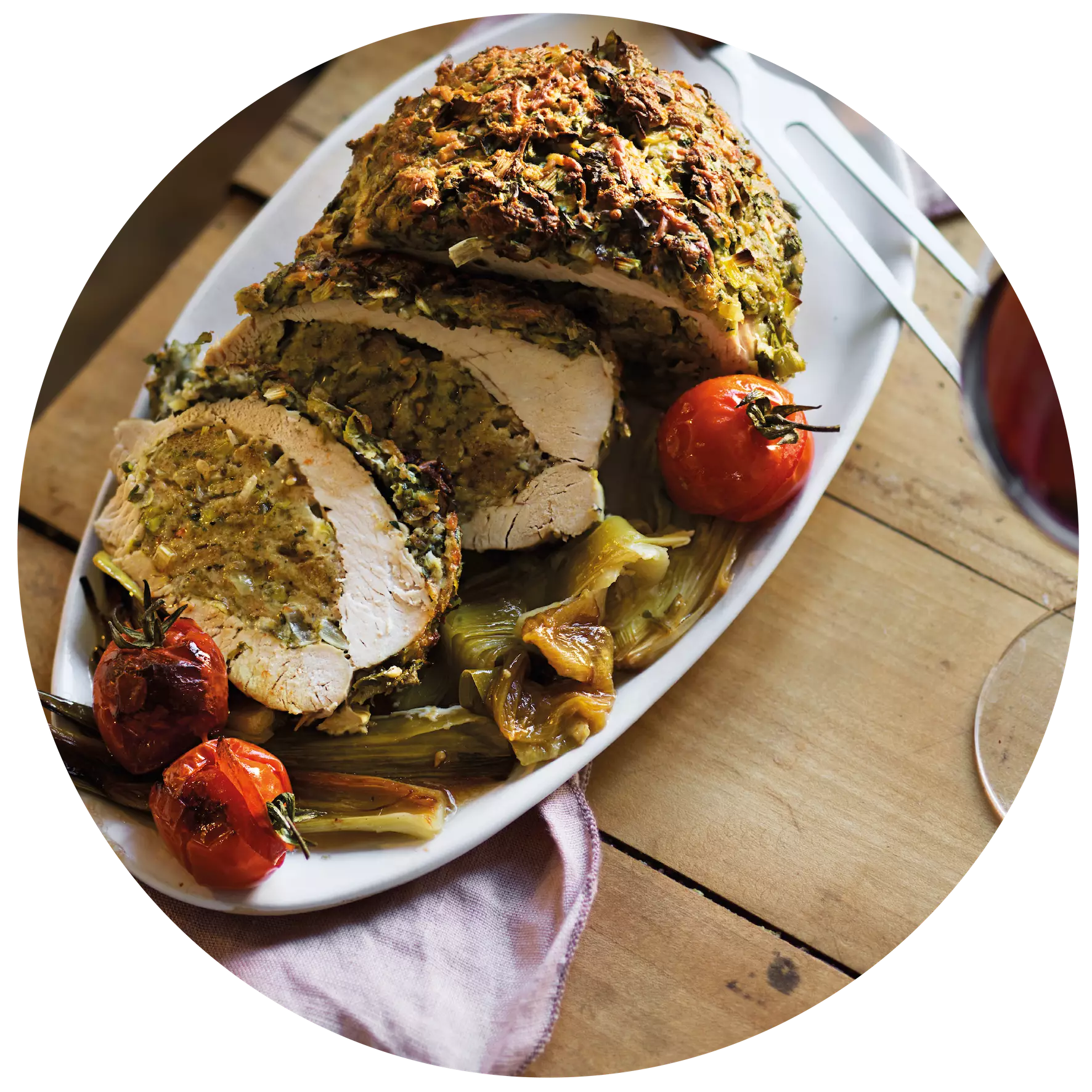
with fresh chanterelles Autumn bruschetta
with fresh chanterelles
- 4 Ciabatta-Brötchen
- 200 Gramm kleine Pfifferlinge
- 4 EL kleingehackte Petersilie
- 4 Zehen Knoblauch
- 80 Gramm Pecorino (Hartkäse)
- 8 EL kaltgepresstes Olivenöl
- Eine Prise Salz & Pfeffer
Preheat the oven to 200 degrees.
Clean the chanterelles. Sauté the parsley in a pan with half of the oil, then add the mushrooms and cook over a low heat for approx. 5 minutes.
Slice the rolls and bake for approx. 5 minutes until crispy.
Chop the garlic into small pieces, spread on the warm bread rolls and drizzle with the other half of the oil. Coarsely grate the pecorino.
Stir the chanterelle and parsley mixture into the pecorino and spread over the halves of the rolls.
- Pinot Gris (trocken)
- Federweißer (brut nature)
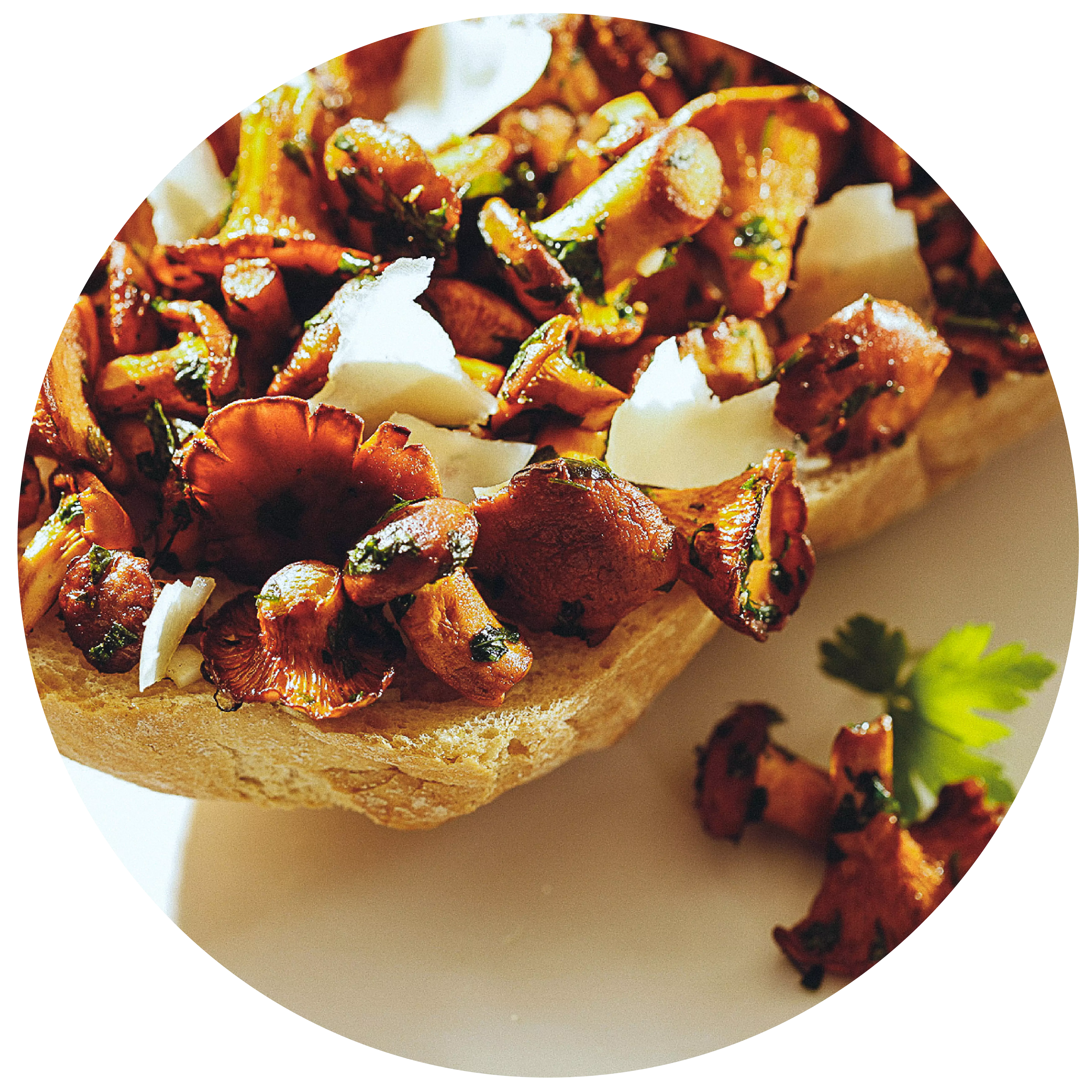
with shrimps Pumpkin soup
with shrimps
- 1 kleiner Hokkaido-Kürbis
- 1 Zwiebel
- 5 cm Ingwer
- 2 EL Butter
- 750 ml Gemüsebrühe
- 300 ml Kokosmilch
- 12 mittelgroße Shrimps
- 2 EL Olivenöl
- Eine Prise Salz & Pfeffer
Peel and dice the pumpkin, onion and ginger and sauté in the butter.
Deglaze with the vegetable stock and sauté for about 15 to 20 minutes until soft.
Sauté the shrimps in a little olive oil and leave to cook over a low heat for a few minutes. Place on wooden skewers and keep warm in aluminium foil.
When the vegetables have been steamed until soft, blend finely with a hand blender. Stir in the coconut milk and season with salt and pepper to taste.
Serve the soup in large cups and garnish with the shrimp skewers.
Freshly baked white bread goes well with this.
- Muskateller (halbtrocken & feinherb)
- Federweißer (brut nature)
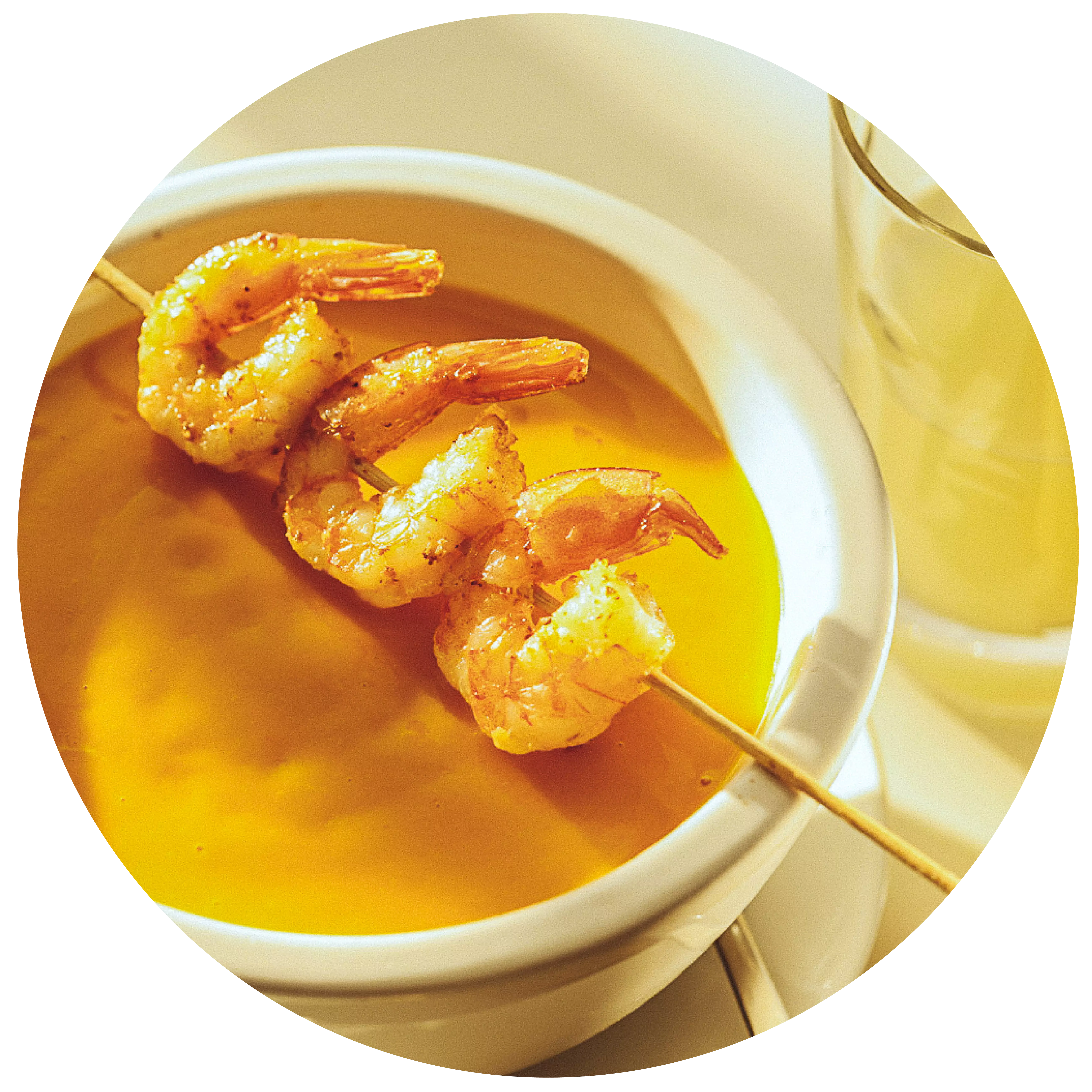
with blueberries Banana and parsley waffles
with blueberries
- 25 Gramm glatte Petersilie
- 200 ml Milch
- 2 Eier Größe L
- 70 Gramm Zucker
- 1 Päckchen Vanillezucker
- 100 ml Öl
- 75 Gramm Naturjoghurt
- nach Belieben Butterschmalz oder Pfannenfett
- 300 ml Sahne
- 1 halbe Vanilleschote
- 2,5 EL Puderzucker
- 500 Gramm Blaubeeren
- 100 ml weißer Traubensaft
- 250 Gramm Mehl
- 1 TL Backpulver
- 200 Gramm überreife Bananen
- eine Prise Meersalz
Dough:
Mix the flour, 1 pinch of salt and baking powder in a bowl and set aside.
Blend the bananas and parsley with 100 ml milk to a fine puree. Put to one side.
Separate the eggs. Mix the egg yolks with 20 g sugar, vanilla sugar, oil and banana puree until smooth. Stir in the flour mixture, milk and yoghurt with a whisk.
Beat the egg whites with 1 pinch of salt and the remaining sugar until stiff. Fold the beaten egg whites into the batter.
Topping:
Whip the cream with the seeds from the vanilla pod and 1.5 tbsp icing sugar until creamy (not too stiff!). Leave to cool.
Heat a large pan, lightly caramelise 1 tbsp of icing sugar, add the blueberries and toss briefly, deglaze with the grape juice and allow to reduce briefly.
Preheat the waffle iron and melt the clarified butter. Brush the waffle iron with a little clarified butter, ladle in the batter in batches and bake until golden brown. Serve with the topping.
- Scheurebe (süß & edelsüß)
- Silvaner (süß & edelsüß)
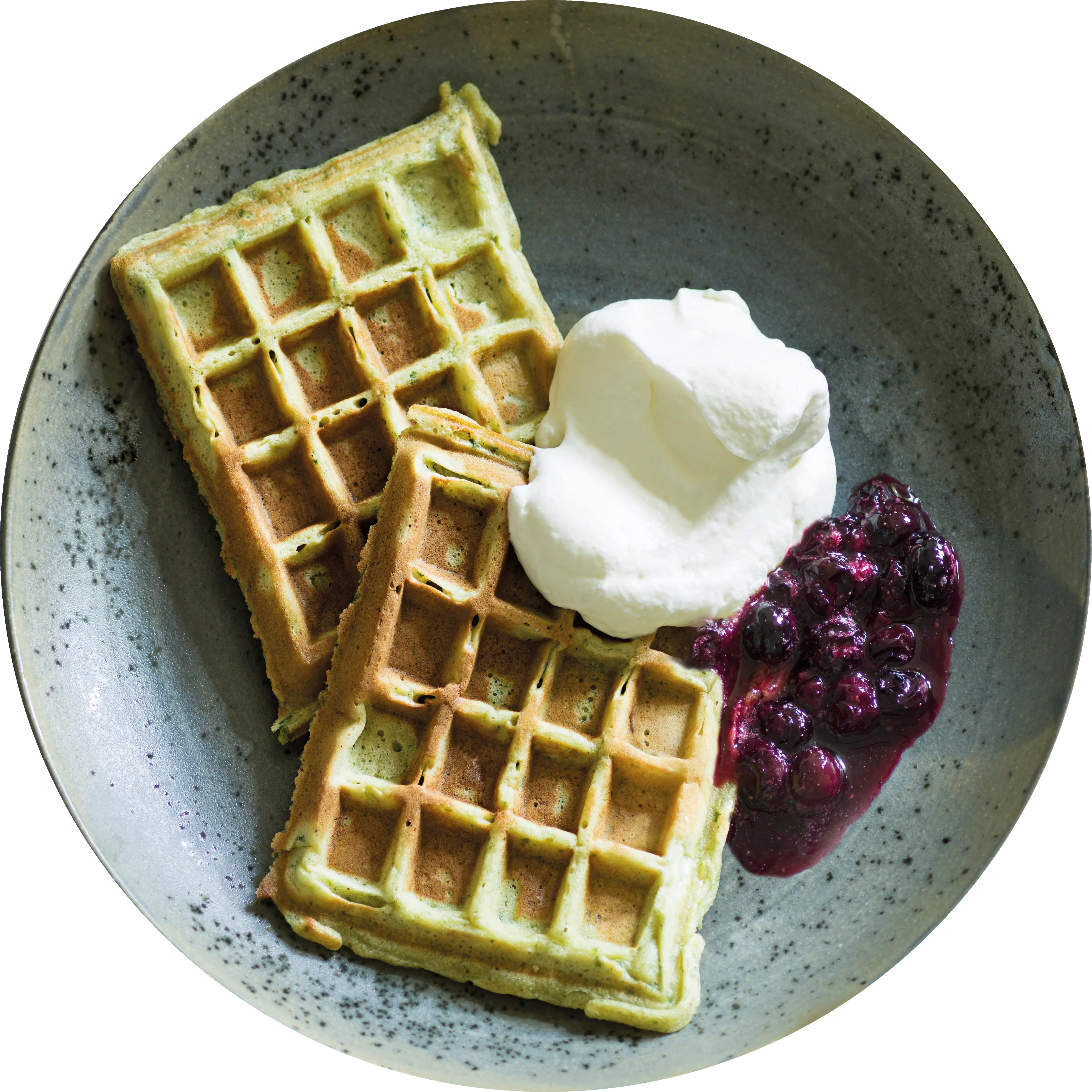
Teaser
Events
-
Show
winetasting in our winery - cheese & wine
Mainz-Hechtsheim


